Blue Badge
 I'm going to work for Microsoft. There, I said it. I'm going to work for ScottGu's team in the Developer Division.
I'm going to work for Microsoft. There, I said it. I'm going to work for ScottGu's team in the Developer Division.
Someone once showed me a diagram that looked something like the one at right. Most of us spend our time over in the red circle doing stuff someone will pay us to do. If you're lucky, you spend your time in-between them, doing stuff you're good at also. Sometimes something comes along that puts you right in that sweet spot and you have to go for it. Will this be my dream job? Could be, I don't know, but if it's not, it might get me a lot closer.
What's this mean for this blog and the podcast?
Fortunately, nothing. The blog is still mine. The podcast is still Carl's and mine, and while having a Blue Badge will get me access to more interesting people to interview (Hopefully some smarties in Microsoft Research. Maybe Bill, or that elusive Ray Ozzie interview...he's only turned me down twice, and he was very nice about it) as well as, hopefully, some exclusives. I'm still going to talk about what I want to talk about. ScottGu and team were very cool and explicit that the blog and podcast are mine.
Will the voice of this blog change?
If it does, then I'm doing something wrong. I've been an advocate for some things Microsoft for years, while other things, not so much. That's why I'm going to work for the DevDiv (Developer Division) and not Marketing. I might be a fanboy, but I'm not evil.
All the blog stuff, the articles, the podcasting, screencasts, etc, that I've done over the years have been done on my own time, usually very late at night for no money save what I can get from Google Adsense and a few advertisers that pay for my hosting.
When someone is a starving artist, they paint for the love of it. They starve, and paint, and starve and paint, and lament that no one will pay them for their art. Then one day, a benefactor comes along and says, "You're brilliant! I'll give you $ if you paint me 10 more just like it, with these small changes, and have those done by Tuesday, m'kay?" And the painter sometimes regrets it. Everyone that I've talked to has been totally up front and cool about things and while my job will be to Spread the Good Word, it's not like I wasn't already doing that anyway. However, no one will be editorializing my content and I'll likely get into trouble occasionally.
What's my job?
The HR title is a nice generic one like "Program Manager" (I was thinking to get this on my business card - Scott Hanselman - progman.exe, what do you think? ;) ) but in essence I'm going to talk about .NET and Visual Studio - the whole of DevDiv, including ASP.NET, WinForms, WPF, Silverlight, CLR, LINQ, IIS, DLR, .NET CF, everything. This means videos, screencasts, podcasts, maybe some Channel 9 stuff, doing articles, wikis, speaking at conferences and large events (invite me!), creating starter kits, samples, as well as my regular hobby of plugging things into other things. I'll also be working on understanding our community (that means you, Dear Reader) thr ough conversations, visits, and trying to bring some big picture analysis (the kind of stuff I do now, again) to the .NET 3.5 and .NET Futures stack. I am also obsessed with getting my new Apple Newton Messagepad 2000 to sync with Outlook 2007, so watch for that.
What about Corillian/Checkfree?
The combination of CheckFree and Corillian promises to change the way people manage their money online, and I gave careful and serious consideration to the opportunities I had to continue to contribute to that vision. There's rarely a good time to leave a company, especially one that you love, but this was as close to a "it's not you, it's me" kind of breakup as one can have. I've been spreading the Computer Zen on the side for five years now. I've been speaking as part of INETA, doing the MVP and RD thing for years. While there's huge opportunity at Corillian/Checkfree right now, the bosses (and my friends) made it clear that I could be a big part of the future, this opportunity just happened (at Foo Camp, actually) to come together in such a cool way that I decided I wanted to move out of my comfort zone and take a leap of faith.
I've grown to know ScottGu and many of the folks in MSFT Building 42 and have decided that they are good people. Sure, there are some odd decisions that are made in the big house, but now I'll be on the inside, trying to make sense of them, and hopefully I'll be able to influence things for the better.
What's next?
 Stewardship is defined many ways, but I like these two:
Stewardship is defined many ways, but I like these two:
"Taking responsibility for the survival and well-being of something that is valued, such as a natural resource" and "an individual's responsibility to exercise care over possessions entrusted to him or her"
If you trust me, you know that I'm not evil, and that I'm going to Microsoft in order to bring additional trust into the relationship between developer and platform. There needs to be a sense of stewardship and a deep valuing of the trust that developers put into their tools.
All this said, I've gone ahead, Dear Reader, by creating a Hanselborg image for you, in the interest of saving you the time of doing it yourself.
I now return you to your regularly scheduled blog.
About Scott
Scott Hanselman is a former professor, former Chief Architect in finance, now speaker, consultant, father, diabetic, and Microsoft employee. He is a failed stand-up comic, a cornrower, and a book author.
About Newsletter

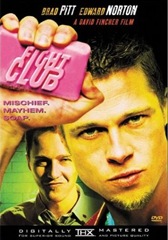 We had a great email go out today from Brian Windheim, one of the Architects here. He said I could share it. It was sent internally to his team. I like Brian's style.
We had a great email go out today from Brian Windheim, one of the Architects here. He said I could share it. It was sent internally to his team. I like Brian's style.



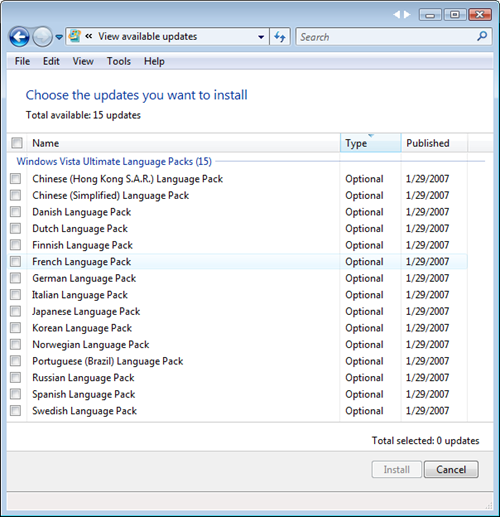
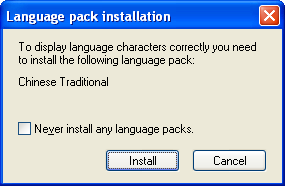 Where it can get confusing is that these packs are for localizing the interface. Showing the interface (output) is a different problem than inputting in another language. And all this is different from simply browsing in a foreign language.
Where it can get confusing is that these packs are for localizing the interface. Showing the interface (output) is a different problem than inputting in another language. And all this is different from simply browsing in a foreign language.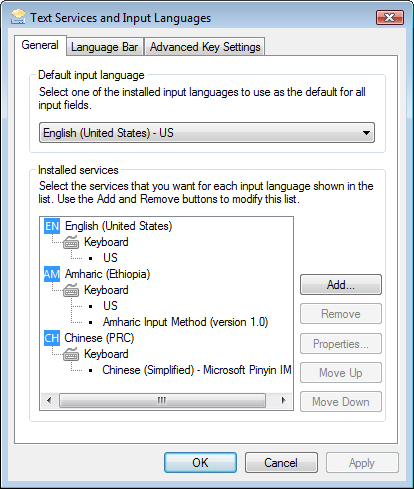
 Make sure you click over to the Language Bar tab and make sure that Docked in the Taskbar or Floating on the Desktop is checked. You'll see your existing culture appear in the Language Bar - mine is in the tray.
Make sure you click over to the Language Bar tab and make sure that Docked in the Taskbar or Floating on the Desktop is checked. You'll see your existing culture appear in the Language Bar - mine is in the tray.

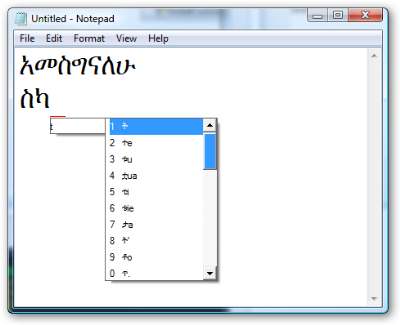
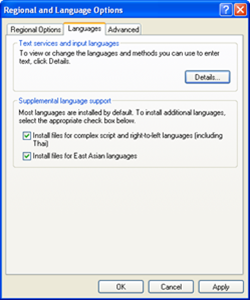 To see your whole Windows Interface in a different language, look at a
To see your whole Windows Interface in a different language, look at a